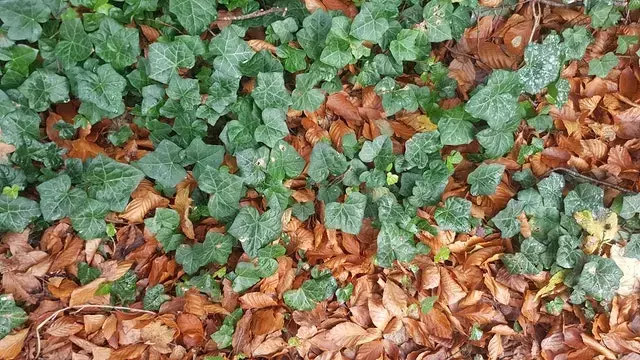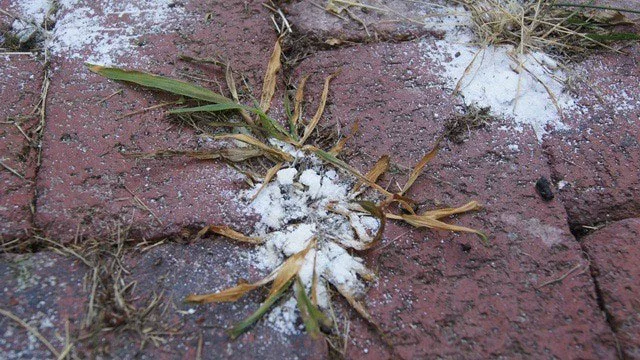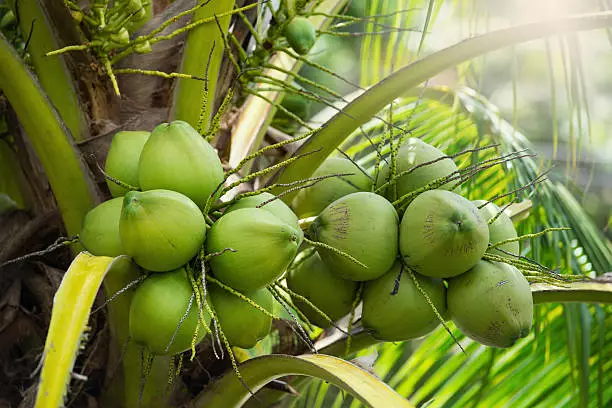Calla lilies are a beautiful addition to any garden or floral arrangement. However, many people are unsure whether these stunning flowers are annual or perennial. In this article, we will answer this common question and provide you with all the information you need to care for your calla lilies.
Understanding Calla Lilies
First, it is important to understand the difference between annual and perennial plants. Annual plants complete their life cycle within one growing season and then die off. Perennial plants, on the other hand, live for multiple growing seasons and come back year after year. So, are calla lilies annual or perennial? The answer is that it depends on where you live and how you care for them.
Calla lilies (Zantedeschia sp.) are beautiful and elegant flowers that come in a variety of colors such as white, pink, orange, yellow, rose, maroon, coral, and even black. They are known for their trumpet-shaped blooms and unique petals that curl at the edges. But are calla lilies annual or perennial?
Well, the answer is that calla lilies are perennial flowers. This means that they can live for more than two years, making them a great addition to any garden or landscape. However, it’s important to note that calla lilies are not cold-hardy and cannot survive extreme winter temperatures. Therefore, they are often grown as annuals in colder climates.
There are many different varieties of calla lilies, each with its own unique characteristics. Some of the most popular varieties include the classic white calla lily, the pink calla lily, and the orange calla lily. Other varieties come in shades of yellow, rose, maroon, coral, and black.
When it comes to caring for calla lilies, they prefer moist, well-drained soil and partial to full sun. They should be watered regularly but not overwatered, as this can lead to root rot. Calla lilies should also be fertilized every 4-6 weeks during the growing season to ensure healthy growth and vibrant blooms.
In conclusion, calla lilies are beautiful and unique perennial flowers that come in a variety of colors and varieties. While they are not cold-hardy and cannot survive extreme winter temperatures, they can live for more than two years in the right conditions. With proper care and maintenance, calla lilies can be a stunning addition to any garden or landscape.
Calla Lilies: Annual or Perennial
Calla lilies are a popular choice for gardeners looking to add a touch of elegance to their outdoor space. But are they annual or perennial plants? The answer is not as straightforward as you might think.
First, let’s define what we mean by annual and perennial plants. Annuals are plants that complete their life cycle in one growing season, while perennials live for more than two years. Tender perennials, on the other hand, are plants that are perennial in their native climate but are grown as annuals in colder regions.
So, where do Calla lilies fit in? Calla lilies are technically tender perennials, as they are native to warm, tropical climates and can survive for several years in the right conditions. However, in colder regions where the winters are harsh, calla lilies are often treated as annuals and replanted each year.
If you live in a climate with mild winters, you may be able to grow calla lilies as perennials. To do so, you’ll need to provide them with well-draining soil, plenty of sunlight, and consistent moisture. You’ll also need to protect them from frost and cold temperatures in the winter months.
If you live in a colder climate, you can still enjoy calla lilies as annuals. Plant them in the spring after the last frost and enjoy their stunning blooms throughout the summer months. When fall arrives, simply dig them up and discard them or compost them.
In conclusion, whether calla lilies are annual or perennial plants depends on your climate and growing conditions. With proper care, they can thrive as perennials in warm climates or as annuals in colder regions.
Origin and Habitat of Calla Lilies
Calla lilies (Zantedeschia spp.) are native to southern Africa, specifically in the regions of Lesotho, Swaziland, and South Africa. They are also commonly known as arum lilies, trumpet lilies, and pig lilies.
In their natural habitat, calla lilies grow in marshy areas and along riverbanks. They prefer moist, well-draining soils and can tolerate partial shade.
The first calla lilies were introduced to Europe in the late 17th century and were initially grown as greenhouse plants. They were later introduced to the United States in the 1800s and have since become a popular garden plant in California and other warm climates.
Today, calla lilies are grown commercially for their ornamental value and are used in floral arrangements and as potted plants. There are many different cultivars available, with varying colors and sizes of flowers.
Overall, calla lilies are a beautiful and versatile plant that can thrive in a variety of conditions.
Planting Calla Lilies
When planting calla lilies, it is important to consider the timing and location. These beautiful flowers are typically planted in the spring, after the last frost. Calla lilies can be planted in garden beds or containers, but it is important to ensure that the soil is well-drained.
If planting in a garden bed, we recommend loosening the soil and adding compost or peat moss to improve drainage and provide organic matter. Calla lilies should be planted about 4 inches deep and spaced at least 12 inches apart. If planting in a container, make sure it has drainage holes and fill it with moist but well-drained soil. Plant the calla lily bulb or rhizome about 2 inches deep.
When planting a potted calla lily, we recommend using potting soil and a container with drainage holes. Place the potted plant in a location with bright, indirect sunlight and keep the soil moist but not waterlogged. Calla lilies prefer slightly acidic soil, so adding peat moss or organic matter to the potting soil can help maintain the pH balance.
In summary, planting calla lilies requires well-drained soil, whether in a garden bed or container. Adding compost, peat moss, or organic matter can help improve soil quality. When planting in a container, make sure it has drainage holes and use moist but well-drained soil. With proper care and attention, calla lilies can thrive and provide beautiful blooms.
Caring for Calla Lilies
When it comes to caring for calla lilies, there are a few things to keep in mind. These beautiful plants require a bit of attention to thrive, but with the right care, they can be a stunning addition to any garden.
Watering
Calla lilies prefer consistently moist soil, but they don’t like to be waterlogged. We recommend watering them deeply once a week, or more often if the weather is particularly hot or dry. Be sure to let the soil dry out slightly between waterings to prevent root rot.
Light
Calla lilies do best in full sun to partial shade. They can handle some afternoon shade, but too much shade can lead to leggy growth and fewer flowers.
Temperature and Frost
Calla lilies are not frost-hardy and should be protected from freezing temperatures. If you live in an area with cold winters, we recommend overwintering your calla lilies indoors or mulching heavily to protect the bulbs.
Care
Calla lilies are relatively low maintenance, but they do benefit from regular fertilization and mulching. We recommend feeding them with a balanced fertilizer every 4-6 weeks during the growing season and mulching around the base of the plant to help retain moisture and suppress weeds.
Hardiness Zones
Calla lilies are typically hardy in USDA zones 8-11, but some varieties can be grown in colder climates with proper care and protection from frost. Be sure to check the hardiness zone of the specific variety you’re interested in before planting.
Overall, calla lilies are a beautiful and rewarding plant to grow. With a little bit of care and attention, they can flourish in your garden for years to come.
Calla Lily Growth and Blooms
Calla lilies are a popular choice for gardeners due to their beautiful flowers and unique foliage. As perennials, they can grow and bloom for several years if given the proper care.
The leaves of a calla lily are large and heart-shaped, growing up to 12 inches long. They are typically a deep green color and can add a lush, tropical feel to any garden.
When it comes to growth, calla lilies prefer moist soil and partial shade. They can grow up to 2-3 feet tall and will produce multiple stems from a single root system.
In late spring, calla lilies will begin to bloom, producing a single flower on each stem. The blooms can last for several weeks and come in a variety of colors, including white, pink, yellow, and purple.
It’s important to note that not all calla lilies will bloom every year. Some may take a year off to focus on growing foliage and establishing their root system. However, with proper care and attention, calla lilies will typically bloom every year.
Overall, calla lilies are a beautiful and low-maintenance addition to any garden. With the right growing conditions, they can provide years of stunning blooms and foliage.
Propagating Calla Lilies
When it comes to propagating calla lilies, there are a few things to keep in mind. First, it’s important to note that calla lilies can be propagated through division, which involves separating the plant into smaller sections. This is typically done when the plant has become too large for its container or when it’s time to repot the plant.
To propagate calla lilies through division, we first need to carefully remove the plant from its container and gently shake off any excess soil. We then examine the plant’s root system and look for areas where we can make clean cuts to separate the plant into smaller divisions. Each division should have at least one healthy root system and a few healthy leaves.
Once we have our divisions, we can repot them into their own containers with fresh soil. It’s important to make sure the soil is well-draining and that the plant is not overwatered, as calla lilies prefer moist but not waterlogged soil.
Another method of propagating calla lilies is through seed propagation, but this can be a bit more challenging and time-consuming. It’s important to note that calla lilies grown from seed may not produce flowers for several years, so this method requires patience and dedication.
In summary, propagating calla lilies through division is a relatively simple and effective method for increasing your plant collection. With proper care and attention, your calla lilies should thrive and produce beautiful blooms year after year.
Potential Calla Lily Problems
Calla lilies are generally easy to care for, but like any plant, they can be susceptible to certain problems. Here are some potential issues you may encounter when growing calla lilies:
Root Rot
Root rot is a common problem with calla lilies, especially if they are planted in poorly-draining soil. To prevent root rot, make sure the soil is well-draining and don’t overwater your plants. If you notice signs of root rot, such as yellowing leaves or a foul smell, you may need to remove the affected plant and replant in fresh soil.
Drainage
As mentioned, good drainage is important for calla lilies. If the soil doesn’t drain well, the roots can become waterlogged, leading to root rot. To improve drainage, you can add sand or perlite to the soil, or plant your calla lilies in raised beds.
Weeds
Weeds can compete with calla lilies for nutrients and water, so it’s important to keep them under control. You can pull weeds by hand or use a hoe to remove them. Mulching around your calla lilies can also help suppress weed growth.
Pests
Calla lilies can be attacked by a variety of pests, including aphids and spider mites. These pests can suck the sap from the plant, causing stunted growth and yellowing leaves. To control pests, you can use insecticidal soap or neem oil. Be sure to follow the instructions on the label carefully.
Invasive
Some calla lilies can be invasive in certain areas, so it’s important to check with your local extension office before planting them. If calla lilies are invasive in your area, you may need to plant them in containers to prevent them from spreading.
Toxic to Humans
Calla lilies contain calcium oxalate crystals, which can cause skin irritation and other symptoms if ingested. If you have young children or pets, you may want to avoid planting calla lilies in areas where they can easily reach them. If you do handle calla lilies, be sure to wear gloves and wash your hands thoroughly after handling them.
Calla Lilies as Houseplants and Cut Flowers
Calla lilies are stunning plants that can be grown both indoors and outdoors. As houseplants, they add a touch of elegance to any room and are relatively easy to care for. When grown in containers, calla lilies can be moved around to different locations to suit your decor or lighting needs.
As cut flowers, calla lilies are a popular choice for weddings and other special occasions. Their long stems and unique shape make them stand out in any vase. To keep cut calla lilies looking their best, change the water frequently and trim the stems at an angle every few days.
When growing calla lilies as houseplants, it’s important to keep in mind that they prefer bright, indirect light and moist soil. They also benefit from regular fertilization during the growing season. If you notice the leaves turning yellow or brown, it may be a sign that the plant is not getting enough water or light.
As cut flowers, calla lilies can last up to two weeks if properly cared for. To help them last longer, remove any leaves that will be submerged in water and keep them in a cool location away from direct sunlight.
Overall, calla lilies are a versatile and beautiful addition to any home or garden. With a little bit of care, they can thrive as both houseplants and cut flowers.
Frequently Asked Questions
How long do potted calla lilies last?
Potted calla lilies can last for several weeks to a few months, depending on how well they are cared for. With proper watering and fertilization, calla lilies can bloom for a long time. However, once the flowers start to fade, the plant will eventually go dormant and may not bloom again until the following year.
Is a calla lily an indoor or outdoor plant?
Calla lilies can be grown both indoors and outdoors, depending on the climate. In colder regions, calla lilies are often grown as indoor plants or in pots that can be moved indoors during the winter months. In warmer regions, calla lilies can be grown outdoors in a garden or container.
Can I plant a potted calla lily outside?
Yes, you can plant a potted calla lily outside. However, it is important to acclimate the plant to the outdoor environment slowly to prevent shock. Gradually expose the plant to more sunlight and outdoor temperatures over the course of a few days to a week before planting it in the ground.
Do calla lilies spread?
Calla lilies can spread through rhizomes, which are underground stems that produce new shoots and roots. However, they are not invasive and typically do not spread quickly or aggressively. To prevent overcrowding, it is recommended to divide calla lilies every few years.
How to overwinter calla lilies in pots?
To overwinter calla lilies in pots, move them indoors before the first frost and place them in a cool, dark area such as a basement or garage. Cut back the foliage and reduce watering to allow the plant to go dormant. In the spring, move the pot back outdoors and resume watering and fertilization.
Can calla lilies survive winter?
Calla lilies can survive winter in warmer regions where the temperatures do not dip below freezing. In colder regions, calla lilies may not survive the winter outdoors and should be moved indoors or dug up and stored in a cool, dark place until spring.



